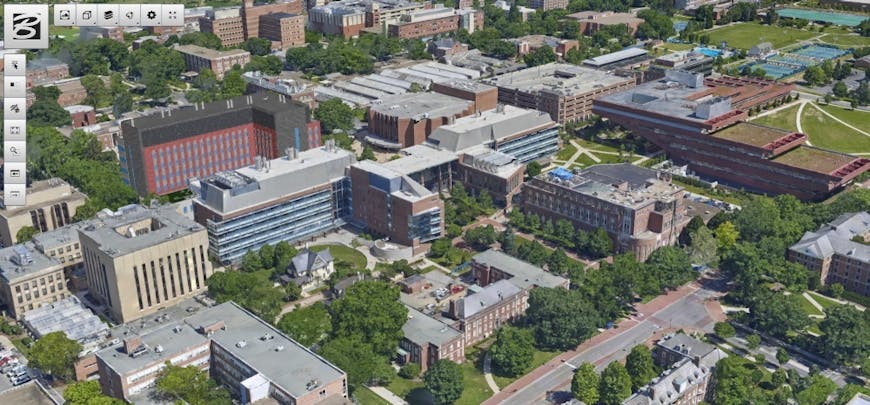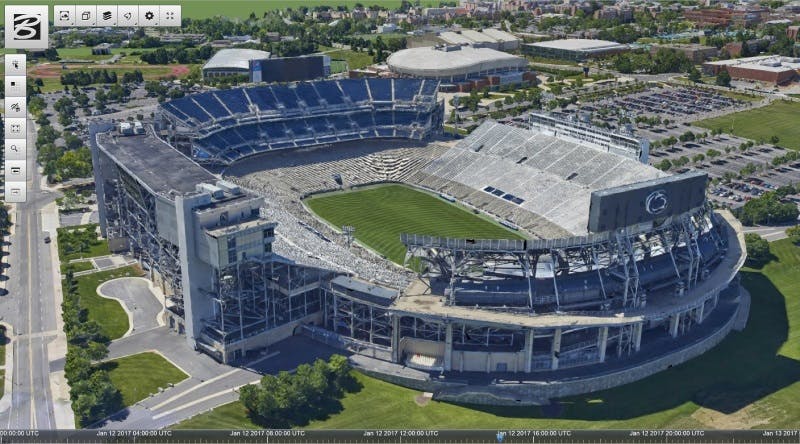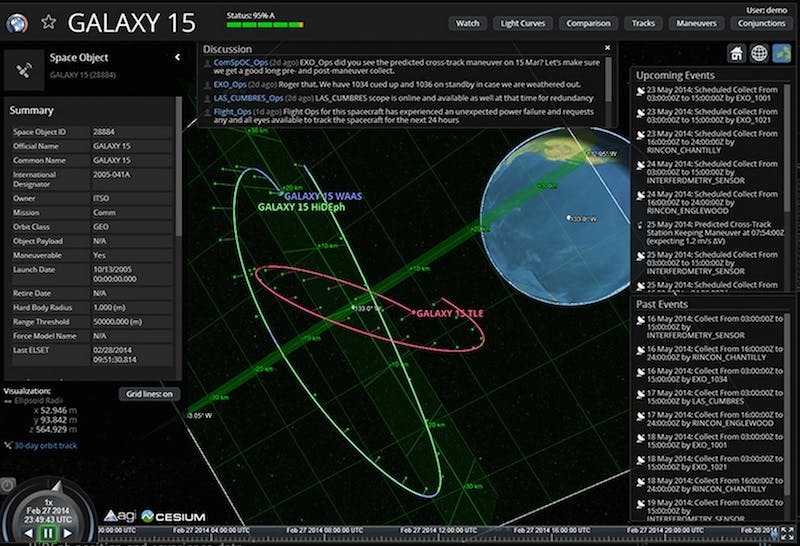The Cesium Consortium
We’re pleased to announce that Bentley Systems is joining Analytical Graphics, Inc. (AGI) as a founding member of the new Cesium Consortium.

Bentley Systems is adopting Cesium to visualize and interact with highly detailed infrastructure engineering models set in the reality context of their surrounding environment. The digital engineering models are created with Bentley’s MicroStation and BIM applications, and the context is provided through reality meshes, created from digital photography and scanning devices using Bentley’s ContextCapture.

Engineering model for the new chemical engineering building at Penn State University surrounded by a reality model of campus.

Beaver Stadium at PSU.
When AGI started Cesium in 2011, our vision was a virtual globe for the aerospace and defense communities. This vision expanded to all geospatial markets as Cesium gained adoption as the virtual globe of choice. Bentley’s work is a prime example of how the industry is pushing forward the 3D geospatial field with Cesium.

AGI's Commercial Space Operations Center (ComSpOC) is a great example of the space apps developed with Cesium.
Like AGI, Bentley sees Cesium as a great advancement for their product line and support for their business strategy of bringing visibility and information mobility to every phase of the infrastructure lifecycle. Bentley’s MicroStation and ContextCapture apps export 3D Tiles, an open format started by the Cesium team to stream massive heterogeneous 3D datasets. Cesium enables Bentley to bring their Building Information Modeling (BIM) content to the web, to the desktop and mobile, with fantastic performance.
On a more personal note, I have worked directly with Bentley for several months. Their dev team and executives truly believe in Cesium and 3D Tiles, and they share both our vision and technical approach. Bentley is also a dedicated partner on the submission team proposing 3D Tiles as an OGC Community Standard.
Bentley is joining AGI to start the Cesium Consortium to
- accelerate open-source Cesium development and
- support long-term open-source Cesium sustainability.
This creates more jobs at AGI for developers to work on Cesium and the Cesium ecosystem, including 3D Tiles and glTF, the open-standard runtime 3D asset format.

With the Cesium Consortium, AGI and Bentley
- collaborate to influence the Cesium roadmap and prioritize bug fixes with input from the community,
- collaborate on outreach such as conferences, the Cesium website, and social media, and
- participate in social coding events such as code sprints and bug bashes.
Cesium will continue to run with transparency, which we believe is the key reason Cesium enjoys the vibrant community we are today. The core team will continue to be active on the forum and on GitHub and will grow to support our growing community. Roadmap discussions on the forum will now be quarterly instead of annually.
With the Cesium Consortium, AGI’s business model for Cesium is now fully defined.
- The Cesium Consortium and community contributions provide sustainability for open-source Cesium. AGI does not aim to profit from the consortium; AGI simply wants to grow the number of full-time developers dedicated to open-source Cesium.
- cesiumjs.com provides optional value-add subscription and OnPrem data services using open formats.
- AGI does service projects in line with the vision of Cesium to help users with strategic projects.
If Cesium is important to your organization and you would like to significantly influence Cesium’s future and support its long-term open-source sustainability, feel free to send me a note, patrick@cesium.com](mailto:patrick@cesium.com), to learn more about the Cesium Consortium.